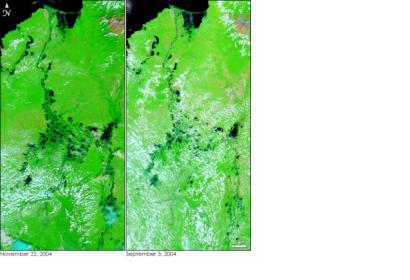United
Nations
Office for Outer Space Affairs
UN-SPIDER Knowledge Portal
The UN-SPIDER Regional Support Office in Colombia, Instituto Geografico Agustin Codazzi (IGAC), has enhanced its capacities to create accurate maps and baselines by acquiring a GeoImaging Accelerator (GXL) Satellite and Aerial processing system from the remote sensing software provider PCI Geomatics.
“The speed, accuracy, and multi-sensor support of the system were determining factors in selecting PCI’s GXL for our projects,” said Jaime Duarte, Assistant Director of Cartography and Mapping at IGAC. “Creating mosaics of over 1,000,000 km2 is an enormous task that requires exceptional speed and automation (...).”
IGAC develops and provides information and knowledge related to cartography, agrology, cadastral, geography and geospatial technologies. It is responsible, among others, for developing the official map of Colombia, creating a soil characteristics inventory, advancing geographic investigations in support of territorial development, and coordinating the “Colombian Spatial Data Infrastructure” or ICDE. It will use the GXL image processing system for example to produce accurately orthorectified basemaps.
